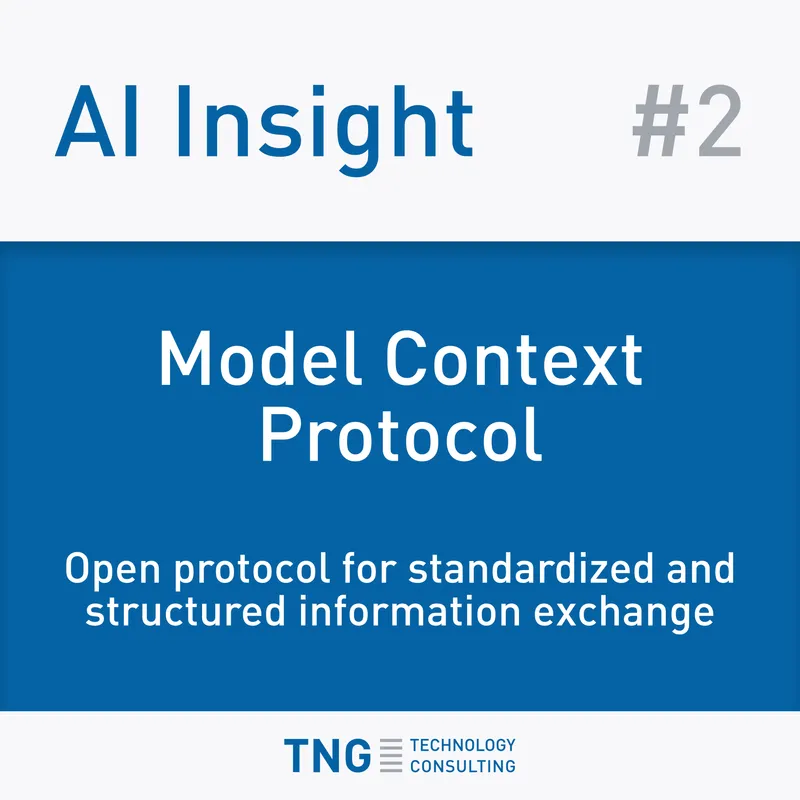TNG AI Insight #2: Model Context Protocol

Today, we introduce the 𝗠𝗼𝗱𝗲𝗹 𝗖𝗼𝗻𝘁𝗲𝘅𝘁 𝗣𝗿𝗼𝘁𝗼𝗰𝗼𝗹 (𝗠𝗖𝗣) - an open protocol that standardizes how applications, services, and AI models exchange structured information in a reliable, predictable way. MCP is designed to make tools, APIs, and models work together without requiring custom integrations for each pairing.
Rather than being a broad set of guidelines, MCP 𝗱𝗲𝗳𝗶𝗻𝗲𝘀 𝘀𝗽𝗲𝗰𝗶𝗳𝗶𝗰 𝗿𝗲𝗾𝘂𝗲𝘀𝘁/𝗿𝗲𝘀𝗽𝗼𝗻𝘀𝗲 𝗳𝗼𝗿𝗺𝗮𝘁𝘀 𝗮𝗻𝗱 𝗰𝗮𝗽𝗮𝗯𝗶𝗹𝗶𝘁𝗶𝗲𝘀 that any compliant client or server can use. These can be as simple as a single function that runs code, or as complex as multi-step interactions between distributed components.
𝗞𝗲𝘆 𝗮𝘀𝗽𝗲𝗰𝘁𝘀 𝗼𝗳 𝗠𝗖𝗣:
🔹 Standardized schema and format for data exchange
🔹 Dynamic discovery and use of capabilities between clients and servers
🔹 Consistent tool integration without hard-coded APIs
🔹 Scalability from single-purpose tools to large, distributed systems
MCP is particularly useful when pairing Large Language Models (LLMs) with external services via APIs. An 𝗠𝗖𝗣-𝗟𝗟𝗠 𝘀𝗲𝘁𝘂𝗽 consists of four main components:
🔹 Host application: Execution environment for the LLM
🔹 MCP client: Bridges the LLM to external tools
🔹 MCP server: Exposes tool capabilities in the MCP format
🔹 LLM: The reasoning engine that issues requests to available capabilities
𝗛𝗼𝘄 𝗱𝗼𝗲𝘀 𝗧𝗡𝗚 𝘂𝘀𝗲 𝗠𝗖𝗣?
At TNG, we’ve been working with MCP for months to build tailored integrations. For example, our Slack MCP server allows the LLM to read and send messages in authorized channels.
𝗕𝗲𝗻𝗲𝗳𝗶𝘁𝘀 𝗼𝗳 𝗠𝗖𝗣:
By adopting MCP, developers gain:
🔹 Seamless interoperability across tools and models
🔹 Reduced integration complexity and maintenance overhead
🔹 Scalable, modular architecture
🔹 Reusable components across different LLM and tool configurations
For more in-depth insights into MCP visit this website.